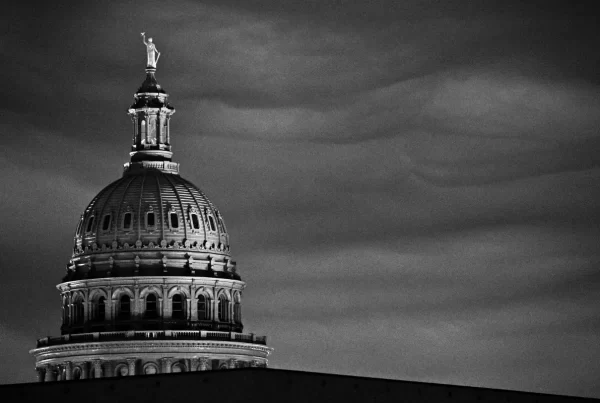The word “biennium” means a two-year period. In Texas, the term is usually used to refer to the budget, though it can also refer to the state’s two-year legislative cycle or election cycle.
Unlike the federal government or many U.S. states, Texas operates on a biennial budget system, meaning the Legislature meets to adopt a two-year financial plan every other year. This structure reflects both historical precedent and a long-standing preference for limited government, requiring lawmakers to forecast revenue and spending priorities far in advance.
Understanding how this system works is key to grasping how Texas government operates.
The fiscal biennium in Texas runs from September 1 of an odd-numbered year through August 31 of the next odd-numbered year. For example, the 2026–2027 biennium will begin on September 1, 2025, and end on August 31, 2027.
The Biennial Budget: Constitutional Roots
The Texas Constitution requires the Legislature to adopt a balanced budget for each biennium (Article III, § 49a). This means the state must estimate its revenues in advance and may not appropriate more money than it expects to collect.
The Comptroller of Public Accounts issues the official Biennial Revenue Estimate (BRE) prior to each regular session and must certify that proposed spending falls within available funds. No deficit spending is allowed under Texas law, and emergency appropriations require a supermajority vote and gubernatorial approval.
This strict constitutional framework ensures fiscal restraint, but it also places significant pressure on lawmakers to make accurate forecasts and long-term policy judgments during a relatively short legislative window.
Timeline of a Texas Biennium
The major legislative and budgeting milestones typically occur as follows:
- Even-numbered year (interim): Agencies prepare Legislative Appropriation Requests; Legislative Budget Board conducts hearings and planning.
- January (odd-numbered years): Regular legislative session begins; Biennial Revenue Estimate is released.
- Spring (odd-numbered years): Budget bills move through both chambers, shaped by committee input and public testimony.
- May (odd-numbered years): Final budget adopted before session adjournment.
- June (odd-numbered years): Governor may issue line-item vetoes; Comptroller certifies the enacted budget.
- September 1 (odd-numbered years): New biennium and fiscal year begin.
This schedule also aligns with the legislative biennium, during which state lawmakers may meet in special sessions, but not in regular session again until two years later—unless a special session is called by the Governor.
Advertisement
Flexibility Through Supplemental Bills
Although the budget is written to cover two full years, it can be adjusted mid-cycle through supplemental appropriations, typically passed in the following legislative session. These bills address shortfalls, emergencies (such as natural disasters or Medicaid cost overruns), or changing economic conditions. They still require Comptroller certification and cannot violate the state’s balanced budget rules.
Strengths and Limitations of the Biennium Model
The biennial budget system reflects a long-standing preference in Texas for limited government and fiscal predictability. It reduces the number of appropriations sessions, encourages long-range planning, and gives agencies two-year funding certainty.
However, it can also be rigid in the face of fast-changing circumstances. Population growth, inflation, and federal regulatory changes may outpace the budget’s assumptions, forcing lawmakers to rely on supplemental bills or budget riders. Critics argue that the biennial approach underfunds programs in high-growth sectors such as public health and education, while supporters maintain that it enforces discipline and restraint in spending.



